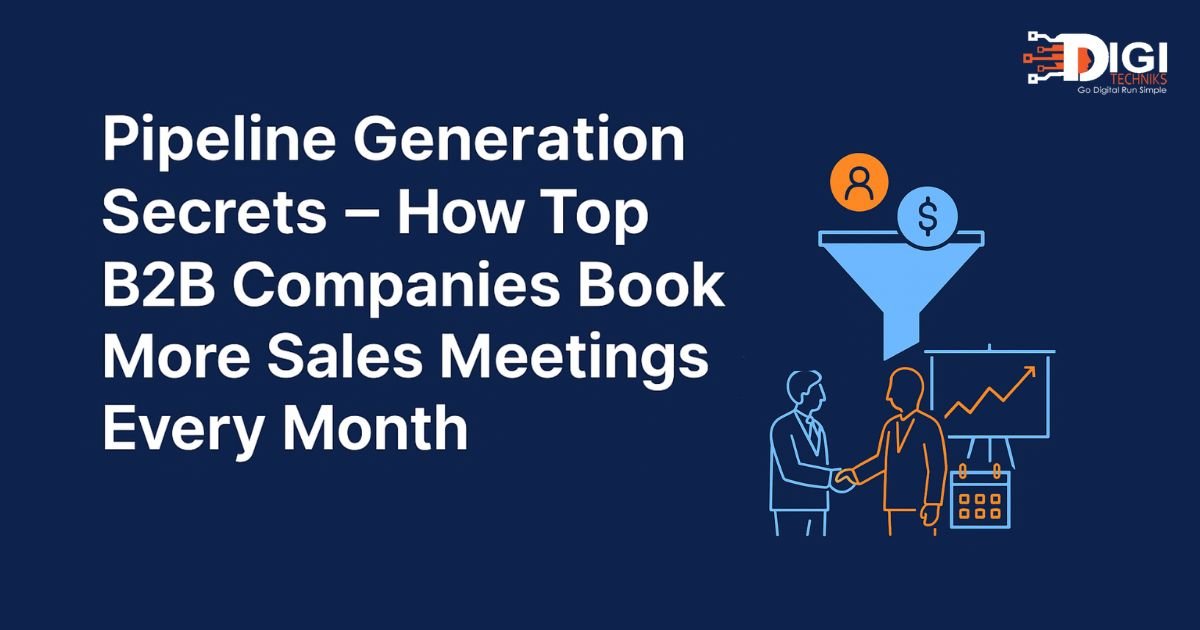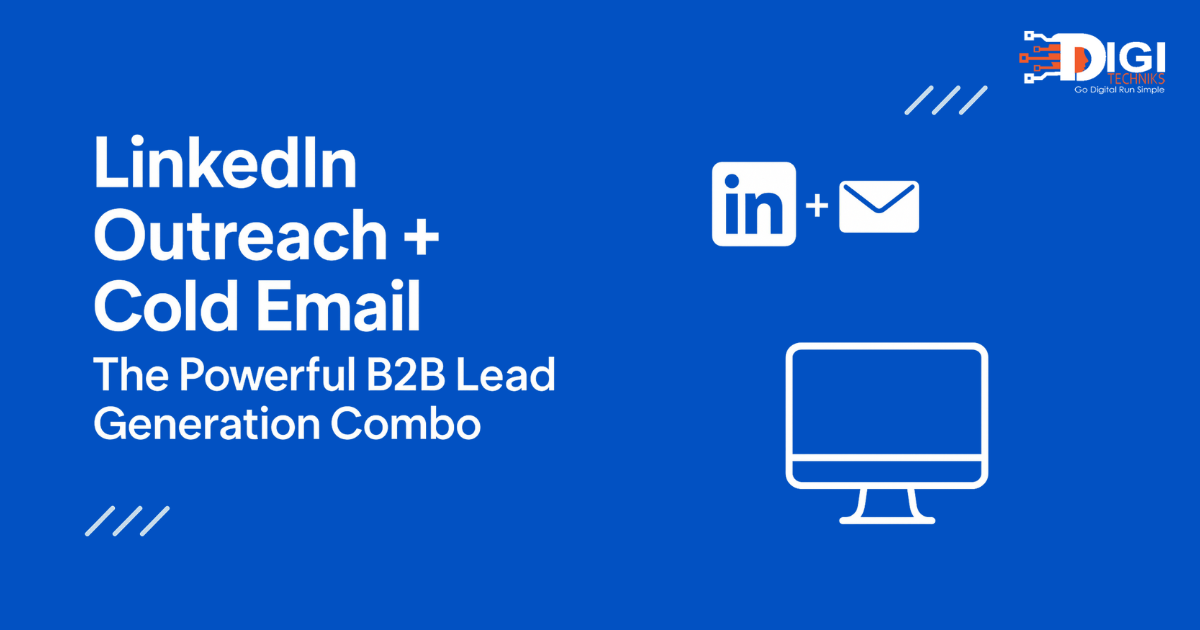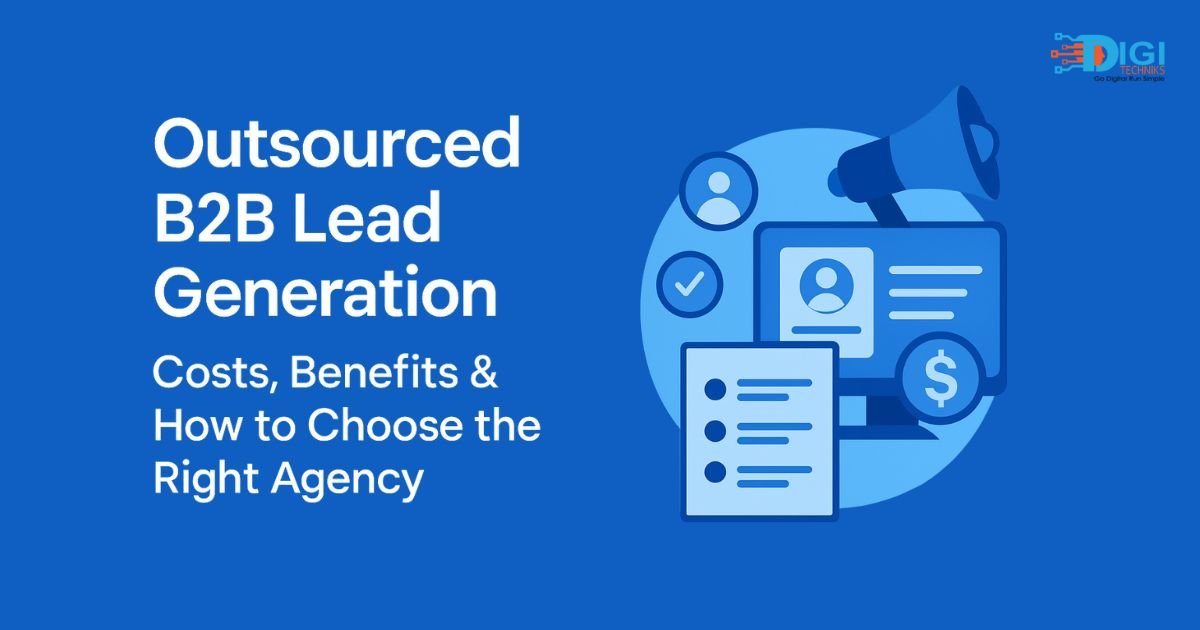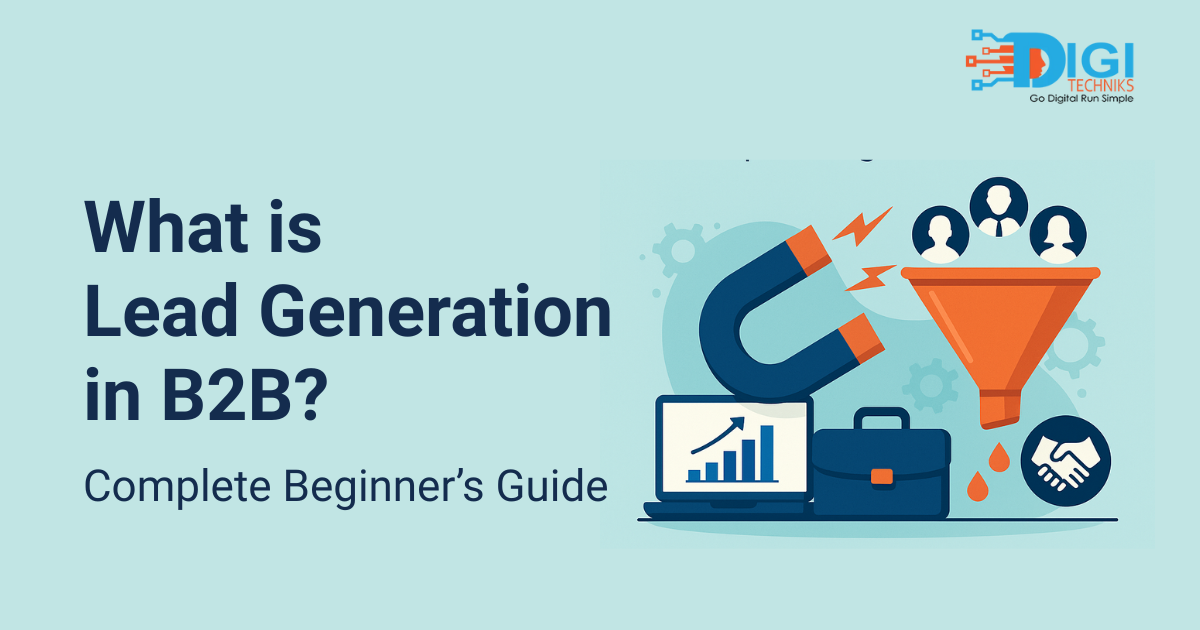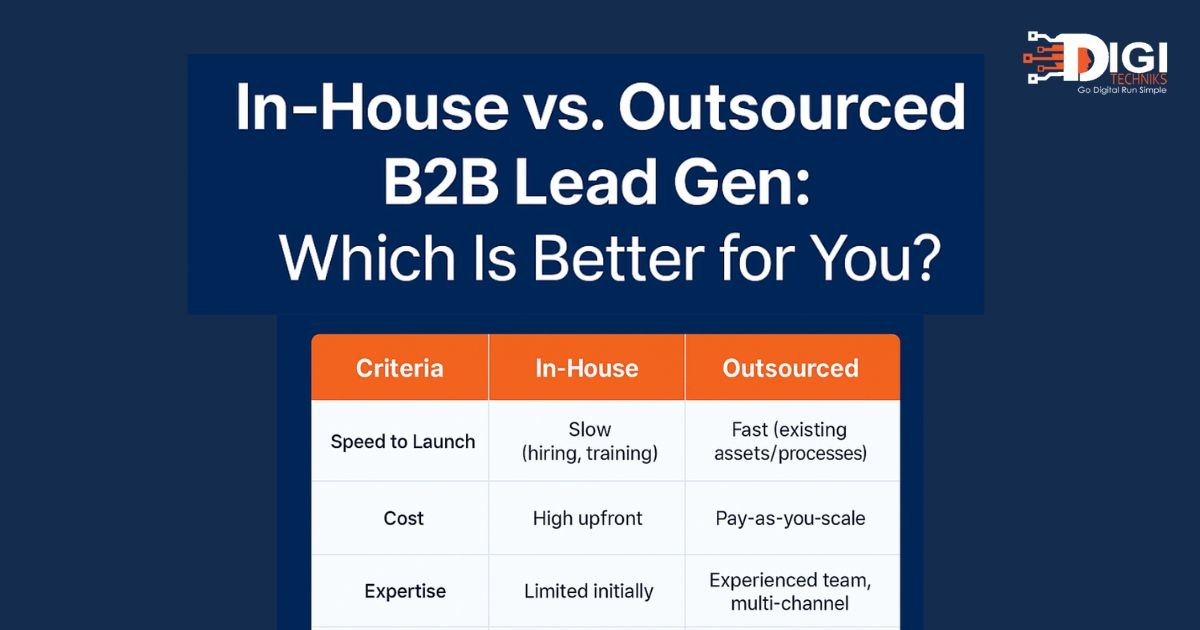
Why Your Calendar Isn’t Full (Yet)
One of the biggest frustrations in B2B sales today? Empty calendars.
Even with healthy ad budgets, marketing campaigns, and outbound attempts, too many companies still struggle to book consistent, qualified sales meetings. The problem isn’t that buyers aren’t interested—it’s that the system to generate predictable pipeline is missing.
Top-performing B2B companies don’t rely on luck or random tactics. They build structured systems that connect revenue goals to weekly lead flow and daily outreach. That’s the difference between a sales team waiting for opportunities—and one with 15+ qualified meetings on the calendar every month.
We’ve helped B2B firms across industries go from just 2–3 inconsistent meetings a month to 15+ booked conversations monthly—not by chasing hacks, but by executing a proven, structured outreach system.
Key Takeaways:
-
Two Clear Paths – You can either build an in-house SDR/BDE team with your own tools and processes, or leverage an outsourced agency with pre-built systems.
-
In-House Pros & Cons – Offers higher control and ownership but comes with slower setup, higher upfront costs, and costly trial-and-error.
-
Outsourced Pros & Cons – Delivers faster results, scalability, and expertise but requires comfort with shared responsibility and less direct control.
-
Best for Early-Stage & Mid-Market – Outsourcing works best initially. Having one in-house BDE alongside the agency creates a strong bridge and speeds up personalization.
-
Non-Negotiables Before Starting – Conversion-ready website, ICP-driven messaging, case studies, clear response mechanism, and automation-based follow-ups are must-haves.
-
Hybrid Model Wins for Growth – Many mid-market companies succeed by outsourcing outreach while keeping in-house SDRs to manage pipelines and nurture leads.
-
Stage-Based Decision –
-
Early-stage → Outsource with in-house support
-
Growth-stage → Hybrid approach
-
Enterprise → Full in-house with strategic external support
-
-
Core Insight – The right choice isn’t about tactics but about systems. Structured execution beats random lead gen efforts every time.
Bottom line: If speed and predictability matter, outsourcing is the fastest path; if long-term control is the priority, in-house works; and if you want both, go hybrid.
The 5 Secrets of Predictable Pipeline Generation
So, what separates B2B companies that consistently fill their calendars from those stuck chasing random tactics? It comes down to five core secrets. These aren’t tricks or quick hacks—they’re repeatable systems that top-performing sales and marketing teams use every month to generate demand, nurture prospects, and convert interest into real meetings.
Each secret builds on the other, creating a complete pipeline engine. Start with the end goal, sharpen your pitch, layer in the right channels, and then execute with speed and consistency. Here’s how the best B2B companies do it:
Secret #1: Start with the End (Revenue-Driven Targeting)
Most companies start their lead generation journey with a simple question: “How do we get more leads?” But the best B2B companies flip that thinking. They don’t start with leads—they start with revenue goals.
Here’s how the process works:
-
Define your annual revenue target
-
Break it down into monthly sales goals
-
Translate those into meetings required
-
Reverse-engineer to set weekly lead targets for each segment
This approach turns pipeline generation from guesswork into pipeline math. Instead of chasing vanity metrics like impressions or raw leads, you’re aligning your outreach with the exact number of conversations needed to hit your growth goals.
The best systems don’t treat lead generation as “marketing.” They treat it as a direct path from aspirations → meetings → revenue. That’s why companies using this approach scale faster—they know exactly how many leads they need and where they should come from.
Read more: Not Getting Qualified B2B Sales Leads? Here’s What Might Be Going Wrong
Secret #2: Use a T-Model Pitch That Opens Doors
One of the biggest mistakes B2B companies make is leading with generic service pitches. Messages like “We do digital marketing, IT services, or consulting” get lost in a sea of sameness—buyers tune them out instantly.
Top-performing companies know that to start conversations, you need a segment-specific, high-value entry offer that solves a pressing problem quickly. Something prospects can easily say yes to without a big commitment.
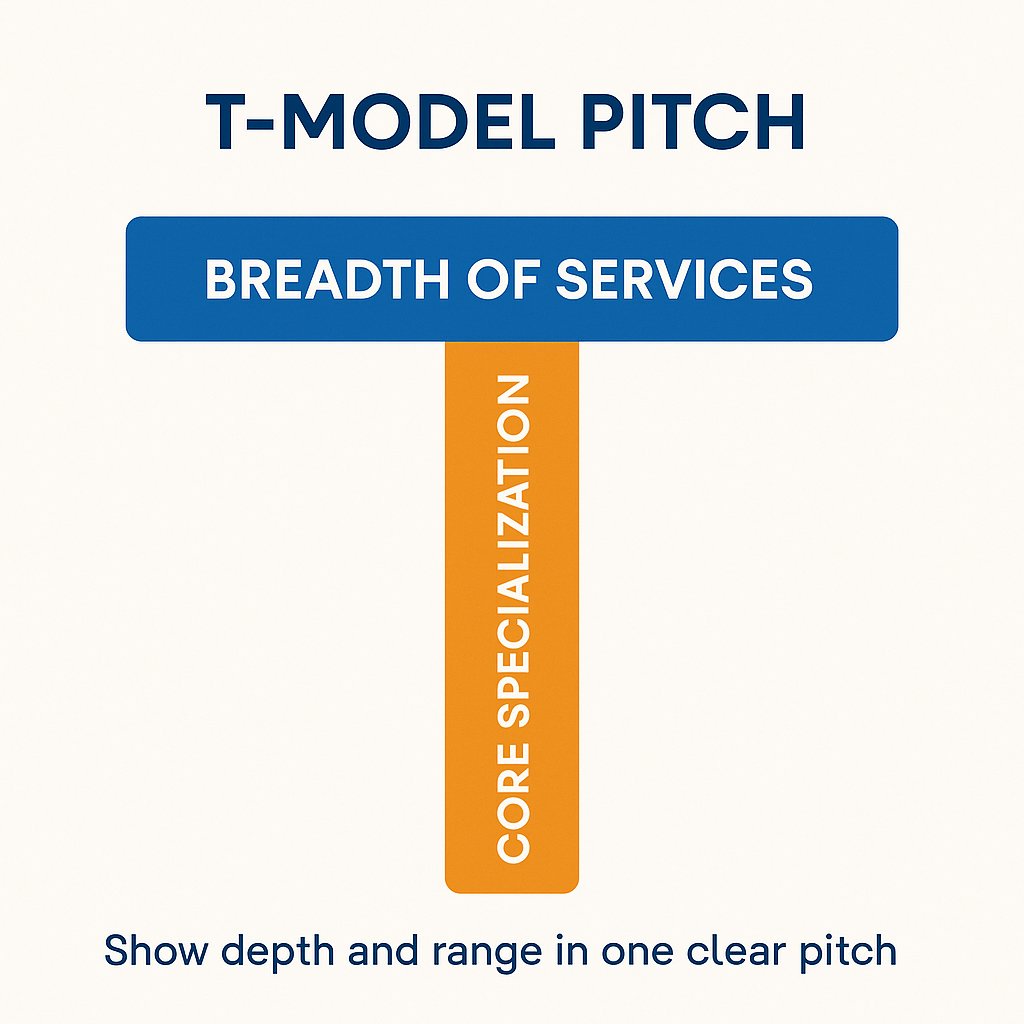
We call this the T-Model Strategy. Think of it like the top of a “T”: one narrow, irresistible offer designed to open doors. Once that door is open, you expand vertically into your broader set of solutions. This builds trust step by step instead of overwhelming buyers with a full-service menu upfront.
Companies using a T-Model pitch consistently see higher reply rates because they’re not trying to sell everything at once—they’re offering a low-friction entry point that naturally leads into deeper engagements.
Secret #3: Execute Multi-Channel, ICP-Aligned Outreach
Relying on a single channel for lead generation is one of the fastest ways to stall your pipeline. Top B2B companies don’t leave it to chance—they run multi-channel campaigns that meet their Ideal Customer Profile (ICP) where they already spend time.
Here’s what that looks like in practice:
-
LinkedIn for visibility, thought leadership, and direct outreach
-
Cold Email for scalable, targeted conversations at volume
-
SEO (especially case studies, use cases, and solution pages) to build trust mid-funnel
The magic isn’t just in using multiple channels—it’s in aligning every message to the specific aspirations of each buyer persona. That means your LinkedIn DM, your email subject line, and even your case study all reinforce the same pain point and solution.
In our execution, we’ve seen the highest results when LinkedIn, Email, and SEO are sequenced strategically—each touchpoint nudges the prospect closer to a meeting, without feeling repetitive or random.
Read also: B2B Lead Generation Services Explained – What You Get & What to Expect
Secret #4: Respond in 15 Minutes or Less
Most companies underestimate the power of speed-to-lead. Research shows that a prospect’s interest begins to fade within minutes of reaching out. By the 30-minute mark, many leads are already cold. The top B2B companies know this and act fast.
That’s why they assign a dedicated SDR or response handler whose only job is to reply quickly—ideally within 15 minutes. This speed shows professionalism, builds trust, and dramatically increases the likelihood of booking a meeting.
With the right follow-up automation and SDR alignment, we’ve seen companies double their meeting booking rates—without increasing lead volume—simply by cutting response times in half.
Secret #5: Follow-Up Like a Machine, Personalize Like a Human
Most deals don’t happen on the first touch. In fact, 80% of B2B sales meetings are booked after 5+ follow-ups. The challenge? Balancing automation for efficiency with the human touch that makes prospects feel understood.
Winning companies solve this with sequenced follow-up workflows:
-
Day 1 → Quick acknowledgment + value reminder
-
Day 3 → Share an insight, case study, or relevant stat
-
Day 6 → Address a likely objection or hesitation
-
Day 14 → Polite nudge with a clear next step
Automation ensures consistency, while personalization (referencing the prospect’s role, industry, or pain point) makes each touch meaningful.
We’ve built pipeline automation toolkits that combine both—structured sequences that mimic human behavior while giving SDRs the flexibility to add context. The result? Higher reply rates and warmer conversations without burning out your team.
Real Results from a Structured System
Theory is useful, but results speak louder. One mid-sized SaaS company we worked with was struggling to get consistent traction. Their team managed only 4 unqualified meetings per month, despite investing in ads and sporadic outbound campaigns.
By implementing a T-Model pitch, layering in LinkedIn + email automation, and tightening their response + follow-up workflows, they turned things around in just 45 days.
The outcome?
-
18 high-intent sales conversations booked in a single month
-
240% increase in sales pipeline value
-
A repeatable system they could scale across multiple industry segments
The shift wasn’t about adding more tactics—it was about putting a structured, end-to-end pipeline generation system in place.
Final Thoughts: You Don’t Need More Tactics—You Need a System
Top B2B companies aren’t “lucky” when it comes to filling their pipeline. They’ve systemized the entire process—from targeting and messaging to outreach, response, and follow-up. That’s what allows them to book consistent, qualified meetings month after month.
If your calendar isn’t filling the way you want, the problem isn’t the channel or the tool—it’s the lack of a structured system. Once you put that system in place, every action compounds toward predictable revenue growth.
Want to build a predictable pipeline system?
Book a Free Consultation for a T-Model Pitching Strategy
In 45 minutes, we’ll walk you through:
- Identify a segment-specific offer that opens doors
- Structure your messaging for maximum response
- Map a multi-channel outreach strategy (LinkedIn + Email + SEO)
- Set up automation and follow-up workflows to start generating meetings in 30 days or less
No guesswork. No generic advice. Just a clear plan for better leads.
You can also explore our full guide on Zero‑Budget B2B Lead Generation for organic strategies that complement Cold Email Outreach.
FAQs
What is pipeline generation in B2B sales?
Pipeline generation is the process of creating consistent opportunities by aligning revenue goals with lead targets, outreach, and follow-up systems.
How do B2B companies book more sales meetings?
Top B2B companies use structured systems—revenue-driven targeting, T-Model pitching, multi-channel outreach, and fast follow-ups.
Why do most B2B lead generation tactics fail?
They fail because they’re random and disconnected. Without a system linking goals, messaging, and outreach, tactics alone don’t create predictable pipeline.
What is the T-Model strategy in lead generation?
The T-Model strategy uses a narrow, high-value entry offer to start conversations and then expands into full-service solutions once trust is built.
How fast can a structured lead gen system deliver results?
With the right foundation, companies can start seeing consistent meetings in as little as 30–45 days.

Sharan Kulkarni
Sharan Kulkarni is a B2B Lead Generation Specialist and author of ROI Decoder, with 10+ years’ experience helping SaaS, IT, and service firms generate predictable qualified leads. He leads Digitechniks’ outreach strategies across LinkedIn, cold email, and SEO. Connect with Sharan on LinkedIn

